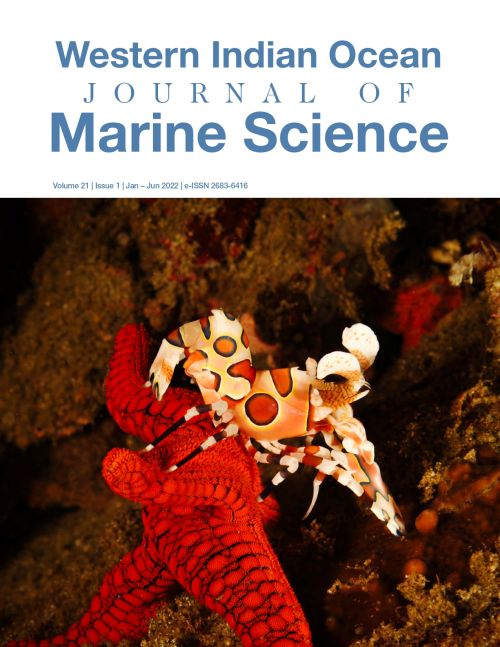Main Article Content
Patterns of fish community structure in protected and non-protected marine areas of mainland Tanzania
Abstract
Information on the benefits of Marine Protected Areas (MPAs) for the condition of fish stocks is not well documented in Tanzania. Fish landing sites located in Tanga and Mtwara regions were surveyed to assess patterns of fish community structure; particularly fish abundance, species diversity, growth patterns, and maturity stages, based on catches landed at sites with different protection status. Fish abundance in the catch from protected areas was significantly lower than in non-protected areas (p=0.002). Species diversity was relatively higher in catches from non-protected (H=2.742) compared to protected areas (H=2.232). A high percentage of species (63.24 %) exhibiting negative allometric growth was observed in catches from non-protected areas. Further, a large number of mature fish was observed in catches from protected areas compared to non-protected areas (p<0.01). These indices are useful indicators of the performance of MPAs. The observed negative allometric growth and reduced number of mature fishes in the non-protected areas suggest that extractive pressure and disturbances from fishing gears have negative impacts on the fish stock. Continued high extraction may induce a decline in general fish size due to the constant selection for large-trait fish specimens, potentially causing evolutionally change in morphological traits. In contrast, the lower abundance and species diversity from the protected areas reflected low catch effort as a result of regulated fishing pressure in MPAs, rather than indicating the actual diversity in the fish stocks in these protected waters. Based on these findings it is recommended that more regulatory strategies are implemented in non-protected waters to allow more time for fish to attain appropriate harvest sizes and to ensure the effective protection of marine resources.






